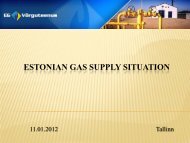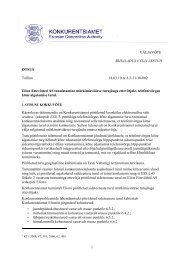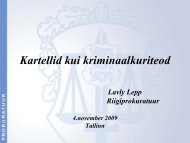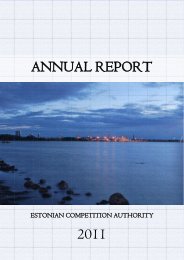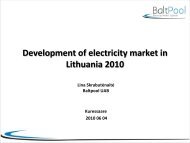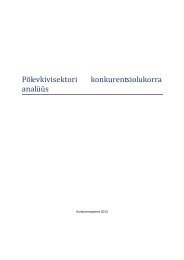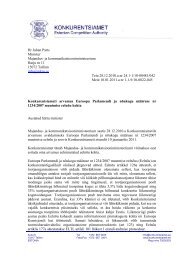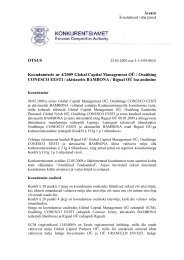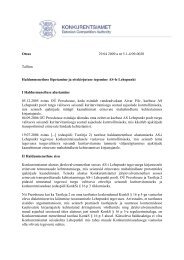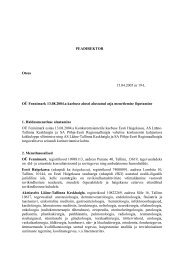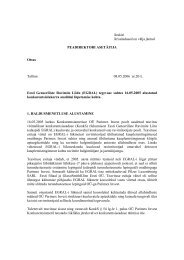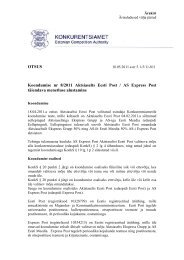ANNUAL REPORT 2010 - Konkurentsiamet
ANNUAL REPORT 2010 - Konkurentsiamet
ANNUAL REPORT 2010 - Konkurentsiamet
Create successful ePaper yourself
Turn your PDF publications into a flip-book with our unique Google optimized e-Paper software.
YEAR <strong>2010</strong> IN THE ENERGY AND WATER REGULATORY DIVISION<br />
The year <strong>2010</strong> was significant for the Energy and Water Regulatory Division in several<br />
respects. On 1 November, the Establishment of Price Limitations to Monopolies Act<br />
entered into force, adding approximately 70 water operators and all heat operators<br />
which were previously under the jurisdiction of local governments to the area of<br />
regulation of the division. As a result of organisational restructuring the former Railway<br />
and Energy Regulatory Division was renamed to the Energy and Water Regulatory<br />
Division.<br />
One of the pivotal tasks of the Energy and Water Regulatory Division is to ensure stable<br />
conditions to consumers in the sectors of electricity, district heating, natural gas as well as<br />
public water supply and sewerage systems. The activities of the Energy and Water<br />
Regulatory Division are predominantly guided by the Electricity Market Act, the Natural<br />
Gas Act, the District Heating Act, the Liquid Fuel Act and the Public Water Supply and<br />
Sewerage Act. The Division made 212 decisions and one injunction during the year <strong>2010</strong>.<br />
The number of decisions was affected mainly by changes in fuel and electricity prices. The<br />
most work intensive were price approval proceedings. As of 31 October, one electricity<br />
transmission network operator, 39 electricity distribution network operators, one natural gas<br />
transmission network operator, 27 natural gas distribution network operators, 50 heating<br />
operators in various network sections, three electricity and heat producers and oil shale<br />
miners were under regulation in the energy sector.<br />
Electricity, natural gas, district heating as well as public water supply and sewerage services<br />
reach the consumers via a corresponding infrastructure. As the infrastructure consists of<br />
natural monopolies, their price regulation falls into the area of regulation of the<br />
Competition Authority. In case of the infrastructure of electricity and natural gas, the<br />
network usage fees do not depend on fluctuations of crude oil prices in the global market but<br />
rather on local economic circumstances involving investment needs, changes of product and<br />
service prices based on internal inflation and technical efficiency.<br />
Pursuant to the electricity and natural gas directive of the European Union, all electricity<br />
and natural gas consumers are provided with free access to the network. Therefore,<br />
consumers are entitled to choose their electricity or natural gas providers and change the<br />
providers when they so desire. Regarding the opening of the electricity market, Estonia has<br />
a transition period until the year 2013. By the year <strong>2010</strong>, Estonia had to open its electricity<br />
33



